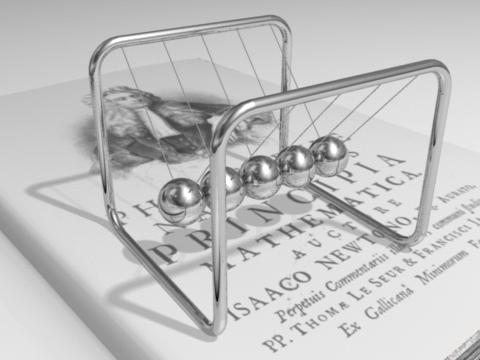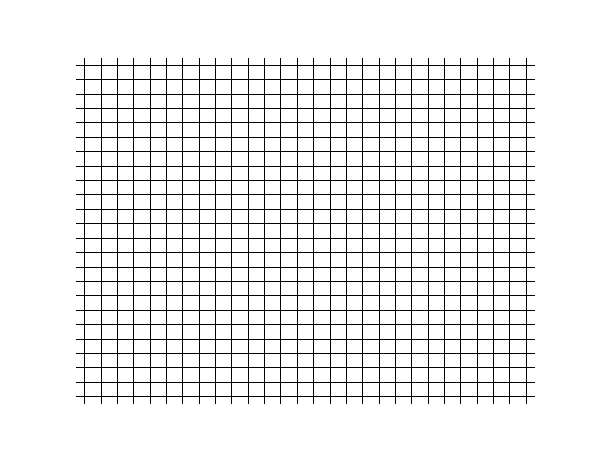Study Guide: Sound G7
- Vibrations cause waves in a medium, and sound is transported by the vibrations.
- Sound requires a source, a medium and a receiver.
- A wave can be thought of as energy traveling through a medium.
- Sound waves are compression waves or longitudinal waves, which are made of vibrating particles that bump into other particles, causing those particles to vibrate and bump into more particles, and so on.
- We hear sounds because vibrations in the air cause our ear drums to vibrate.
- Amplitude is a measure of height of the wave on a graph from the middle to its highest point.
- Frequency is the time that passes between two wave peaks. The frequency of a wave refers to the number of cycles per second.
- Frequency is easily confused with speed. A wave can vibrate very frequently, yet travel at a small speed through a medium, or a wave can vibrate with a low frequency, yet travel at a high speed through a medium.
- The speed of an object refers to how fast it moves in a set amount of time, such as 5 miles/hour. The speed of a wave is the distance a given point on the wave (such as the crest) travels through a medium in a set amount of time.
- Hertz (Hz) is mathematical unit for frequency where 1 Hz = 1 cycle per second.
- Sound travels a different speeds in different conditions. We usually think of the speed of sound in air. However, the speed of sound varies from substance to substance. Typically sound travels most slowly in gases, faster in liquids, and faster still in solids.
- Sound travels at 343 m/s in air in ideal conditions, it travels at 1,481 m/s in water (almost 4.3 times faster) and at 5,120 m/s in iron (almost 15 times faster). In an exceptionally stiff material such as diamond, sound travels at 12,000 metres per second (39,000 ft/s),—about 35 times its speed in air and about the fastest it can travel under normal conditions.
- Reflection phenomena (or echos) are commonly heard with sound waves. We can use echos to measure distance, for example in auto-focusing cameras.
Newton’s Cradle
Vibrations and Waves
Sound is all about vibrations. To make a sound, there needs to be a source—something that vibrates—whether it’s a musical instrument, the larynx (voice box) of a person, or the movement of Tectonic Plates. But there’s more to it than that.
Sound vibrations need a medium to travel through, a substance capable of transmitting vibrations from one location to another.
Finally, there must be a receiver—something capable of receiving and interpreting the vibrations as sound, such as our ears or a microphone.
Sounds Waves
Vibrations cause waves. Sound waves are made of vibrating particles that bump into other particles, causing those particles to vibrate and bump into more particles, and so on. This is why sound travels away from its source. A wave can be thought of as energy traveling through a medium.
Medium
The medium is a series of interacting particles through which the energy moves. This medium might be a gas, fluid, or solid. By the way, sound can not travel through a vacuum because there are no particles to bump into each other.
Compression Wave
Source: Christophe Dang Ngoc Chan (cdang), CC BY-SA 3.0, via Wikimedia Commons.
Hearing
We hear sounds because vibrations in the air cause our ear drums to vibrate. These vibrations are converted into nerve signals that are sent to our brains, where they are understood as noise, or sounds, or music… Similarly, microphones detect vibrations in the air and convert them into electrical signals.
Longitudinal Wave
Many imagine a sound wave like a wave in water. But this isn’t an accurate image. The particles vibrating in a sound wave move back and forth on the axis along which the sound wave is travelling. This movement creates areas where particles are more bunched up (high pressure, or compression) and areas where particles are more spread out (low pressure, or rarefactions). This type of wave is called a longitudinal wave.
Amplitude
The amplitude is a measure of height of the wave on a graph from the middle to its highest point. The amplitude determines a sound’s volume—sound waves of higher amplitude are louder. For example, the sound wave created by an singer projecting their voice to an audience has a higher amplitude than the sound wave produced by someone in the audience whispering.
Frequency
The time that passes between two wave peaks is the time period of the sound wave. To calculate the frequency, we divide 1 by the time period.
The frequency of the sound wave tells us the sound’s pitch. A sound with a higher frequency has a higher pitch. For example, the waves of a high-pitched whistle will closer together than the deep sound of a bass.
Hertz
A mathematical unit for frequency is Hertz (Hz) where:
$$ \textit {1 Hz} = \textit{1 cycle per second} $$If a coil of slinky makes 2 vibrational cycles in one second, then the frequency is 2 Hz.
$$ \dfrac{ \textit{2 cycles}}{ \textit{1 second}} = \textit{2 cycles per second} = \textit{2 Hz} $$If a coil of slinky makes 3 vibrational cycles in one second, then the frequency is 3 Hz.
$$ \dfrac{ \textit{3 cycles}}{1 \textit{ second}} = \dfrac{3}{1} = \textit{3 cycles per second} = \textit{3 Hz} $$And if a coil makes 8 vibrational cycles in 4 seconds, then the frequency is 2 Hz.
$$ \dfrac{ \textit{8 cycles}}{4 \textit{ seconds}} = \dfrac{2}{1} = \textit{2 cycles per second} = \textit{2 Hz} $$Frequency and Speed
Frequency is easily confused with speed. The speed of an object refers to how fast it moves in a set amount of time, such as 5 miles/hour. The speed of a wave is the distance a given point on the wave (such as the crest) travels through a medium in a set amount of time.
$$ \textit{speed} = \dfrac{\textit{distance}}{\textit{time}} $$The frequency of a wave refers to the number of cycles per second. A wave can vibrate very frequently, yet travel at a small speed through a medium, or a wave can vibrate with a low frequency, yet travel at a high speed through a medium.
If the crest of an ocean wave moves a distance of 20 meters in 10 seconds, then the speed of the ocean wave is 2.0 m/s.
$$ \dfrac{ \textit{20 meters} }{ \textit{10 seconds} } = \textit{2.0 meters per seconds} $$On the other hand, if the crest of an ocean wave moves a distance of 25 meters in 10 seconds (the same amount of time), then the speed of this ocean wave is 2.5 m/s.
$$ \dfrac{ \textit{25 meters} }{ \textit{10 seconds} } = \textit{2.5 meters per seconds} $$The faster wave travels a greater distance in the same amount of time.
We usually think of the speed of sound in air. However, the speed of sound varies from substance to substance. Typically sound travels most slowly in gases, faster in liquids, and faster still in solids.
For example, while sound travels at 343 m/s in air, it travels at 1,481 m/s in water (almost 4.3 times faster) and at 5,120 m/s in iron (almost 15 times faster). In an exceptionally stiff material such as diamond, sound travels at 12,000 metres per second (39,000 ft/s),—about 35 times its speed in air and about the fastest it can travel under normal conditions.
| Material | Speed of sound | Times faster than in air |
|---|---|---|
| Air | 343 m/s | $0\times$ |
| Water | 1,481 m/s | $4.3 \times$ |
| Iron | 5,120 m/s | $15 \times$ |
| Diamond | 12,000 m/s | $35 \times$ |
Echos
Reflection phenomena (or echos) are commonly heard with sound waves. When we yell into a canyon, we often hear the the canyon yell back at us. The sound wave travels through the air, reflects off the canyon walls and returns to its origin (us). The result is that we hear the echo (the reflected sound wave) of our yell.
Auto-focusing cameras.
The distance of lightening.
Walk That Bass Videos
1. How Music Works - Acoustics for Musicians
2: What is Sound?
3: Noise vs. Notes
4: Frequency, Wave Shape and Pitch
5: Amplitude, Phase and Envelope
Sound and Music
Bernstein, The Greatest 5 Minutes in Music Education
The Circle of Fifths — How to Actually Use It
Musical Prodigy Improvising From Four Random Notes
Challenge
Joe stands 170 meters away from a steep canyon wall. He yells and hears the echo of his voice one second later. What is the speed of the sound wave?
When there is a reflection (an echo), the distance the sound travels is doubled. In other words, the distance traveled by the sound wave in that 1 second was 170 meters to the canyon wall, and another 170 meters back from the canyon wall.
Therefore, the sound wave traveled 340 meters in 1 second, and the speed of the wave is 340 m/s.




